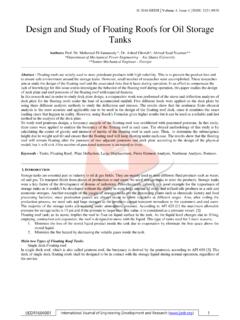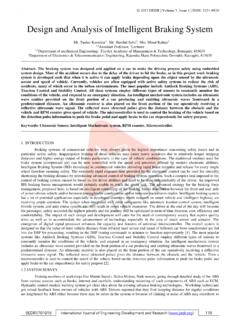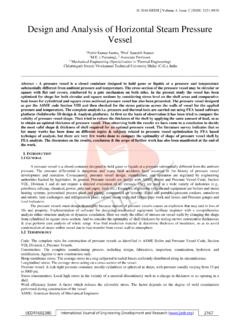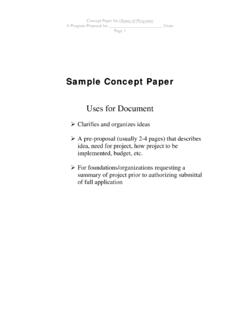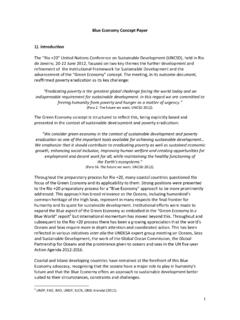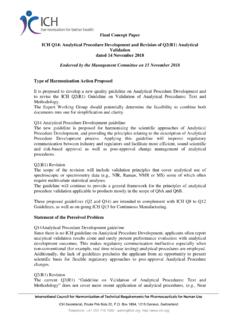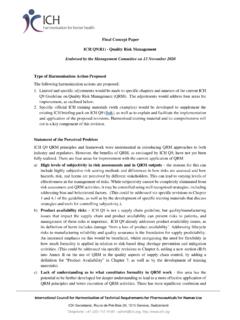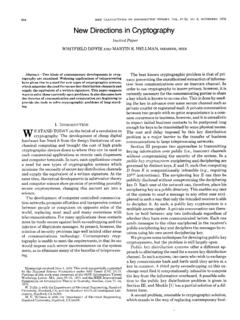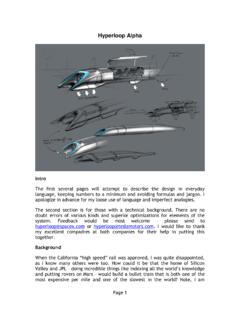Transcription of The Concept & Methodology of Kaizen
1 2014 IJEDR | Volume 2, Issue 1 | ISSN: 2321-9939 IJEDR1401147 International Journal of Engineering Development and Research ( ) 812 The Concept & Methodology of Kaizen A Review paper 1 Jignesh A. Bhoi, 2 Darshak A. Desai, 3 Rohit M. Patel 1 Post Graduate Scholar, 2 Professor & Head of Mechanical Engineering Department, 3 Manager 1 Industrial Engineering, G. H. Patel College of Engineering & Technology, V. V. Nagar, Anand, India 2 Mechanical Engineering Department, G. H. Patel College of Engineering & Technology, V. V. Nagar, Anand, India 3 Worm Cell Division, Power Build Ltd., V. V. Nagar, Anand, India _____ Abstract Now-a-days the ultimate goal of all industries is to enhance productivity through simplified system and incremental improvements by applying some modern available techniques.
2 Kaizen is one of the most recognized techniques of continuous improvement. An application of effective Kaizen will lead to success and growth of an organization. This paper discusses various literatures and presents a Concept & Methodology of Kaizen which will helpful to new research in different fields. Besides this, one representative Kaizen Idea Sheet Format is presented in this paper which may be useful to different kinds of Industries and this will helpful to the Kaizen users and researchers. Index Terms Concept of Kaizen , Continuous Improvement, Kaizen Methodology , Kaizen Toolbox, Lean Manufacturing System, 7 Wastes (Muda). I. INTRODUCTION Kaizen was created in Japan following World War II. The origin of Kaizen can be traced back to the Quality Guru Dr.
3 W. Edwards Deming, but it was Masaki Imai who popularized the Concept of Kaizen to become a revolution around the world. Kaizen is a combination of two Japanese words (kai+zen), literally means Change for the Better [1]. It is a compound word involving two concepts: Kai (change) and Zen (for the better) [2]. This is translated as Continuous Improvement in English. The word Kaizen indicates a process of Continuous Improvement of the standard way of work [3]. The Concept of Kaizen focuses on improving a work space of an organization in step by step improving process and eliminating wastes. The review indicates that the application of Kaizen promises to reduction/elimination of wastes and improves process efficiency. II. WHAT IS Kaizen ? Kaizen is a system that involves everyone upper management to the cleaning team.
4 Everyone is encouraged to come up with small improvement suggestions on a regular basis [4]. Kaizen is based on making changes anywhere improvements can be made. Kaizen is an approach that [5], Starts with people Focuses its attention on people s efforts Processes are continually improved Improved processes will improve results Improved results will satisfy the customers III. LITERATURE REVIEW OF A Concept OF Kaizen The Kaizen philosophy has made great impact on researchers because it enhances the productivity of an organization and also helps to produce high quality products with minimum efforts. The following authors have discussed the Concept of Kaizen : According to Imai (1986), Kaizen is a continuous improvement process involving every one, managers and workers [6].
5 Watson (1986) says that the origin of Plan Do Check Act (PDCA) cycle or Deming Cycle can be traced back to the well known statistics expert Shewhart who has introduce the Concept of PDCA in 1920s. The PDCA cycle is also known as Deming Cycle/Deming Wheel/Shewhart Cycle [7]. Suzaki (1987) refers that CI is a philosophy generally practiced in manufacturing and quality circles. It gives inspiration that there is no end to make a process better [8]. Wickens (1990) highlights the impact of the teamwork on Kaizen . Teamwork and commitment do not approach from involving the representatives of employees, but from direct contact and communication between the individual and his boss [9]. Teian (1992) explains that Kaizen stand for the daily struggles occurring in the work area and the way to overcome it.
6 Thus it is more than just a means of improvement. Kaizen can be applied to any area where there is a requirement of improvement [10]. Hammer et al. (1993) describes that Kaizen creates process-oriented thinking. Hence processes to be improved before superior results are obtained. Improvement can be separated into CI and innovation [11]. Bassant and Caffyn (1994) define the CI Concept as an organization-wide process of focused and sustained incremental innovation . These processes of incremental innovation are supported by various tools and techniques [12]. Deming (1995) describes that organizations are developed at a greater rate than at any time in recorded history. Thus a highly competitive and constantly changing environment recommends major managerial chances as well as challenges.
7 Many managers have squeezed the philosophy of a Kaizen to effectively tackle this situation [13]. 2014 IJEDR | Volume 2, Issue 1 | ISSN: 2321-9939 IJEDR1401147 International Journal of Engineering Development and Research ( ) 813 Deniels (1995) explains that the way to achieve fundamental improvement on the shop floor is to make possible operators to establish their own measures, to support business strategies and to use them to drive their Kaizen activities [14]. Yeo et al. (1995) represents the Concept of Zero Defects and Do It Better Each Time . Zero Defects represents CI over quality by detection of defects. A phrase Do It Better Each Time (DIBET) strategy is associated with constant, conscious and committed efforts to reduce process variation. They conclude that CI is the most important way to manage business through these strategies [15].
8 Newitt (1996) has stated that the thinking of management and employees will be released if Kaizen philosophy is applied. This will enhance creativity and value addition can thrive [16]. Womack and Jones (1996) refer to Kaizen as a lean thinking and lay out a systematic approach to help organizations systematically to reduce waste. They describe waste as any human activity that absorbs resources but creates or adds no value to the process. The process of Kaizen carries many other benefits as well [17]. Ghalayini et al. (1997) explains that Kaizen is characterized by operatives on the shop floor, identifying problems and proposing solutions the essence of spontaneous, bottom-up change [18]. Imai (1997) describes that the improvement can be divided into Kaizen and innovation.
9 Kaizen signifies small improvements as a result of ongoing efforts. Innovation involves a drastic improvement as a result of large investment of resources in new technology or equipment as shown in Fig. 1 [19]. Fig. 1 Source: Imai (1997) Williamson (1997) highlights the Concept of Target Costing and Kaizen Costing Concept . Target Costing is a process that ensures that the products are designed in such a way that the company can sell them at cheaper rare and make a fair profit. Kaizen Costing focuses on the value and profitability of the manufacturing phase, both of new and existing products [20]. Cheser (1998) explains that Kaizen means making small changes on a regular basis by reducing waste and continuously improving productivity, safety, and effectiveness.
10 Kaizen has historically been applied to manufacturing sectors but it is now commonly applied to service business processes [21]. Kim and Mauborgne (1999) highlight incremental improvement as imitation and not innovation . According to them, companies should focus on a positive strategy (value innovation strategy), which focuses on the creation of new customers as well as sustaining existing customers [22]. Williams (2001) describes that CI techniques are the popular way of making considerable reduction to production costs. Quality Function Deployment (QFD) is a well-known technique for translating customer requirements for a product into functional specification [23]. Doolen et al. (2003) explains that impact of Kaizen activities on human resource is measured by various Variables that include attitude toward Kaizen events, skills gained from event participation, understanding the need for Kaizen , impact of these events on employee and work area, and the overall impression of the relative successfulness of these events [24].


